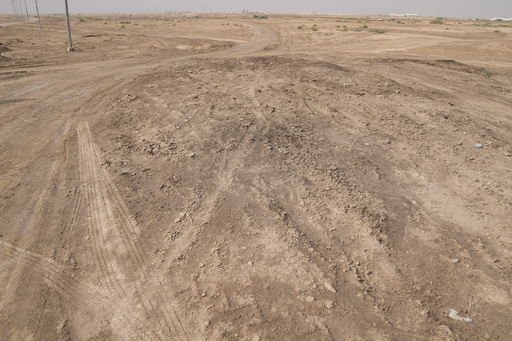
BEIRUT — Newly released U.S. spy satellite images from the 1970s have guided a collaborative archaeological team from Britain and Iraq to a potential site of an important seventh-century battle that played a crucial role in the expansion of Islam in the region.
The Battle of al-Qadisiyah, fought in the 630s A.D. in what is now Iraq, pitched Arab Muslim forces against the Sassanid Persian army during a significant period of Islamic growth. The Arab forces emerged victorious and continued their advance into Persia, modern-day Iran.
A team of archaeologists from Durham University in the UK and the University of Al-Qadisiyah made this discovery while conducting a remote sensing project to map the historical pilgrimage route known as Darb Zubaydah. This path connects Kufa, Iraq, to Mecca, Saudi Arabia, and was established over a millennium ago. Their findings were made public on Tuesday in the journal Antiquity.
While surveying the pilgrimage route, the researchers identified a location approximately 30 kilometers (20 miles) south of Kufa in Najaf province, an arid region with scattered farmland. This site exhibited characteristics that align with historical accounts of the Battle of al-Qadisiyah.
William Deadman, an expert in archaeological remote sensing at Durham University, noted that satellite images from the Cold War era serve as valuable resources for archaeologists in the Middle East. These older images can reveal features that have since been altered or destroyed and may not be visible in contemporary satellite photographs.
“The Middle East has changed significantly over the past 50 years due to both agricultural and urban development,” Deadman explained. Some features of the al-Qadisiyah site, including a prominent trench, were “much more pristine and clear” in the satellite images from the 1970s, he added.
Ground surveys provided confirmation of the findings, solidifying the belief that the research team had accurately located the historical site. Key features identified included a deep trench, two ancient fortifications, and a river that Persian troops, mounted on elephants, once crossed, as described by Jaafar Jotheri, a professor of archaeology at the University of Al-Qadisiyah involved in the project. The team also discovered pottery fragments that align with the period of the battle.
Jotheri reflected on the significance of the battle for Iraqis of his generation who grew up under Saddam Hussein’s regime, where the battle was widely discussed and known, even down to the names of the generals involved on both sides.
During that time, the battle held political significance as Iraq waged a protracted war with Iran throughout the 1980s. Saddam Hussein often referred to the Battle of Qadisiyah as a symbol of impending victory for Iraq. Jotheri recalled how, like many others from his generation, he watched a well-known film about the battle numerous times, as it frequently aired on television.
In the aftermath of Saddam’s rule, perceptions of al-Qadisiyah have become a gauge for political sentiment in Iraq. Opinions on the battle differ broadly, especially in relation to feelings about Iran, which has grown its influence in Iraq since the 2003 U.S.-led invasion that toppled Saddam.
“There is a political and religious context to the battle, as we now navigate various religious, ethnic, and political divides in Iraq,” Jotheri stated. “We interpret everything through our differences, but we all recognize its significance as a decisive battle, and we share a common knowledge of it.”
Looking ahead, the team plans to begin excavations at the site next year, according to Jotheri.
This discovery is part of a larger initiative launched in 2015 to catalog archaeological sites at risk in the region. It coincides with a resurgence in Iraqi archaeology—a country often regarded as the “cradle of civilization”—where exploration has been impeded by extensive conflict, which halted excavations and led to the loss of thousands of artifacts.
In recent years, archaeological efforts have resumed, resulting in the repatriation of thousands of looted artifacts.
